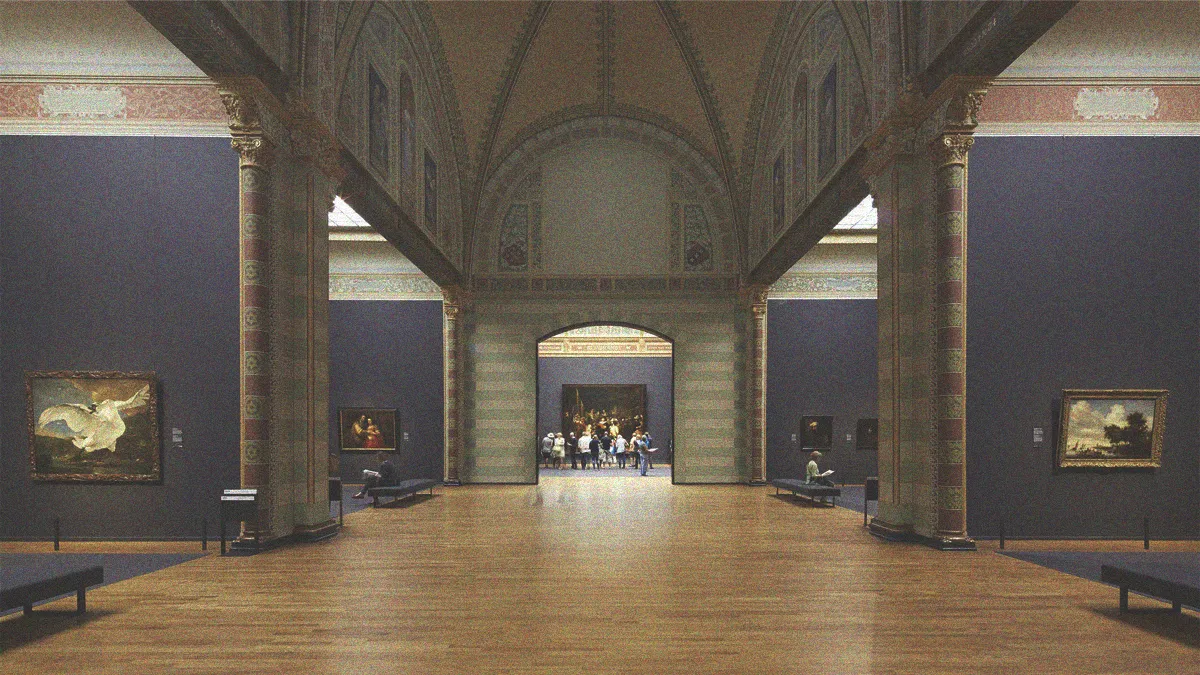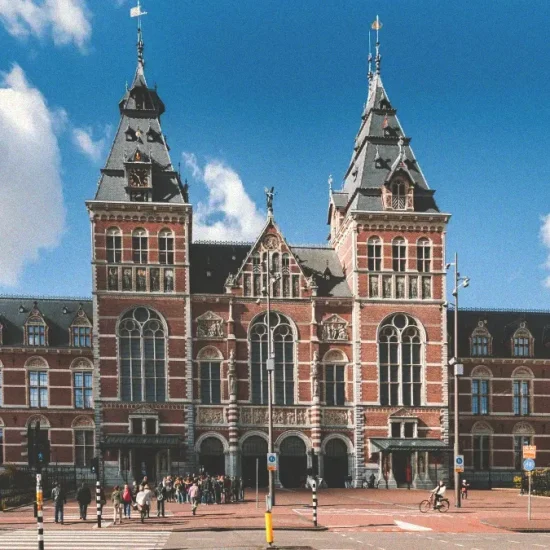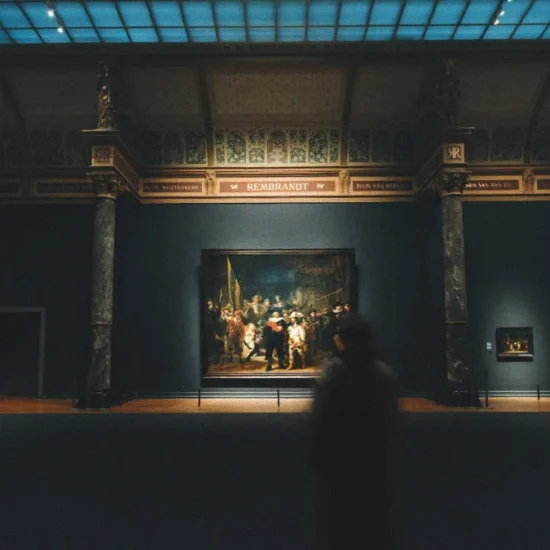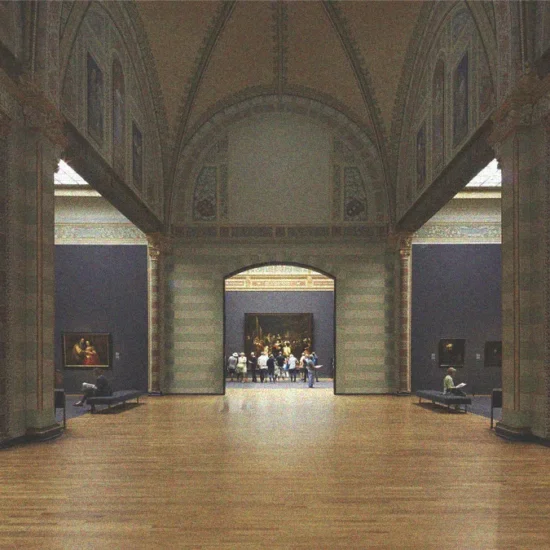Table Of Content
- Key Takeaways
- These are The Best Works of Art at The Rijksmuseum You Should Not Miss
- 1. The Night Watch
- 2. The Milkmaid
- 3. The Threatened Swan
- 4. The Jewish Bride
- 5. The Merry Family
- 6. Woman Reading a Letter
- 7. Still Life with Cheese/Turkey Pie
- 8. The Windmill at Wijk bij Duurstede
- 9. The Serenade by Judith Leyster (1629)
- 10. Self-Portrait by Van Gogh
- How to Plan Your Visit to the Rijksmuseum?
- How to Prepare for Attending the Rijksmuseum
- Frequently Asked Questions (FAQs)
- Final Thought
I remember standing in front of famous paintings in the Rijksmuseum, completely overwhelmed. There were so many masterpieces—but I didn’t know where to start. I wandered from one room to another, missing stories hidden in each brushstroke. It felt frustrating, like walking through history without understanding it.
I kept thinking, “Am I really seeing what makes these works legendary?” That confusion turned my excitement into pressure. But then, I discovered a simple way to explore the art with purpose—one that helps every visitor truly see what makes the Rijksmuseum unforgettable. Let me show you how.
Key Takeaways
- You don’t have to see it all. Let’s just explore these famous paintings and have an immersive experience.
- “The Night Watch,” “The Milkmaid,” and “The Jewish Bride” will stay with you. These are not just paintings but also stories if you deeply step into them.
- Buy your tickets in advance. The museum doesn’t sell tickets at the door, and waiting in long lines? Better to spend time standing in front of beauty, so buy a ticket online.
- Consider a combo ticket. Pair the Rijksmuseum with a canal cruise or another museum. It’s an easier, more graceful way to explore the city.
- Let the art touch something personal. These are moments of joy, struggle, love, and humanity.
These are The Best Works of Art at The Rijksmuseum You Should Not Miss
After you step into this grand gallery, light streams in through high windows, and there it is. These are the top things you can witness at the Rijksmuseum. The ones that stir something inside you or stop you mid-step.
1. The Night Watch

The Night Watch, painted by Rembrandt van Rijn around 1642, is an oil-on-canvas masterpiece. This is currently displayed in the Gallery of Honour at the Rijksmuseum. At 363 cm × 437 cm, The Night Watch is practically alive.
This isn’t your typical static militia portrait. If you look closer, you’ll notice that Rembrandt staged the guards in mid-March. Captain, lieutenant, drummer, even the little girl. It seems they’re stepping out of the canvas. It was revolutionary in 1642, and honestly?
Since 2019, the museum has been conducting Operation Night Watch, the largest and most transparent restoration project ever done on this painting. Conservators work behind a glass chamber right in front of visitors. It’s about experiencing art and science on display. To me, this one is full of stories; that’s why i admire this the most.
This masterpiece is the most visited artwork in the Gallery of Honour, and honestly, it’s hard to blame people for the crowd. People can resist watching. Rembrandt played with light and shadow in a way to immerse people around the symbolic young mascot girl.
2. The Milkmaid

When you’re in front of The Milkmaid, a timeless piece of art, you feel the world slow down. It’s modest in size, around 73 × 57 cm, but Vermeer transforms this everyday moment into something beautifully sacred.
This is a still life with soul. Vermeer paints every fold in her linen cap and every detail in the bread’s crust with such precision, you almost smell the kitchen. When you stand before The Milkmaid, don’t rush it. Let her world of light, color, and care draw you in.
You’ll get to see that rich blue apron. This stunning tone comes from natural ultramarine, a pigment ground from Afghanistan’s lapis lazuli and, surprisingly, more expensive than gold in Vermeer’s day.
3. The Threatened Swan

Jan Asselijn’s “The Threatened Swan,” painted around 1650. It is an oil-on-canvas work located in the Gallery of Honour, also known as the first painting acquired by the Dutch national collection.
A life-sized swan, wings spread wide, standing guard over its bold nest, unyielding, and utterly fearless. That’s Jan Asselijn’s The Threatened Swan, exactly like when a bird becomes a national hero.
It appears to be a swan defending itself against a pesky dog. However, in later years, viewers gained a deeper perspective. The swan symbolized Johan de Witt, the Dutch leader who defended the nation.
His image was etched over one of the eggs, with “Enemy of the State” painted above the dog. Though Asselijn never intended it as political commentary, it became the Rijksmuseum’s first acquisition in 1800, celebrated for its allegorical power.
4. The Jewish Bride

“The Jewish Bride,” painted by Rembrandt van Rijn circa 1665–1669, is one of his most emotionally intimate works, and I felt it the moment I stood in front of it in the Gallery of Honour at the Rijksmuseum.
Two figures stand close, tenderly connected. You may wonder, Are they lovers? Husband and wife? Father and daughter? We don’t know for sure, and that’s part of the magic. Rembrandt didn’t only paint a moment of drama or grandeur; he captured quiet, authentic love, full of vulnerability.
Even Van Gogh was mesmerized. He once said he’d give ten years of his life just to sit in front of this painting for two weeks. This artwork carries that kind of depth and emotional pull. In a world full of loud declarations, this painting whispers, and somehow, for sure, the experience really will stay with you.
5. The Merry Family

“The Merry Family,” painted by Jan Steen in 1668, is an oil-on-canvas scene of chaotic joy and moral humor, located in the Rijksmuseum’s Gallery of Honour. At first glance, The Merry Family (1668) is pure chaos. The kids are banging drums, parents are toasting, and a toddler is tipping a glass.
But look deeper into this unmissable masterpiece, and you’ll see Jan Steen’s clever portrayal. The joy, yes, but also a warning. In other words, Jan Steen tried to express that children mirror their parents through his art.
Steen, a tavern owner and master of the moral comedy, paints this rowdy domestic scene that is both affectionate and ironic. This iconic painting is a must-see to realize the celebration of the chaos of everyday life while thinking about the example we set for others.
This is what made Dutch Golden Age art so rich. You’ll experience it laughed, it taught, and it never looked away from the truth. And centuries later? This family still feels familiar.
6. Woman Reading a Letter
Painted around 1663, Woman Reading a Letter by Johannes Vermeer is an expression of the artist’s private drama. It captures a moment of quiet tension. You don’t see the letter she’s reading; however, the way her posture and expression shift tells you it carries weight. You’ll wonder, maybe longing, maybe surprised.
Art historians even suggest subtle hints underneath. A map on the wall and the woman’s rounded belly point to a love letter and perhaps an unexpected pregnancy. Vermeer painted only 34 works in his lifetime. And each one is rare, having an intimate glimpse into human emotion.
7. Still Life with Cheese/Turkey Pie
Floris van Dijck’s Still Life with Cheese and Turkey Pie might look like just a sumptuous spread. That melting cheese, shiny grapes, a golden turkey pie, and polished pewter catching the light. But there’s more here than meets the eye.
In the Dutch Golden Age, still lifes like this were not only about showing off wealth and good taste. They were subtle reminders that luxury is temporary. That half-peeled lemon, for example, symbolizes how sweetness can quickly turn bitter.
So, when you stand in front of this painting, feel the richness, but remember the quiet message beneath the surface.
8. The Windmill at Wijk bij Duurstede
When you stand before Jacob van Ruisdael’s The Windmill at Wijk bij Duurstede, painted around 1668–1670 on an oil-on-canvas, this masterpiece captures the poetic soul of the Netherlands. It feels expansive, dramatic, and utterly Dutch.
You’ll notice the skies. Thick clouds rolling in, sunlight on the sails, water dancing with reflected light. This is Dutch weather at its most cinematic. Even today, it’s one of the museum’s most beloved images.
9. The Serenade by Judith Leyster (1629)
For a long time, Judith Leyster’s name was missing from the history books. Did you know her work, including The Serenade, was misattributed to male artists? And someone finally took a closer look; what they found was undeniable. A woman painting with confidence, charm, and light that feels almost alive. She created Serenade when she was just 20 years old.
In The Serenade, a musician plays in soft candlelight, his expression half-lost in the music. The talented painter Leyster pulls you into this painting, like you’ve stumbled into a private performance.
10. Self-Portrait by Van Gogh
This 1887 self-portrait is one of the few Van Gogh pieces in the Rijksmuseum collection. Painted during his vibrant Paris period, Vincent van Gogh stares out with eyes that reveal the turmoil and passion beneath the surface.
Here you get to see the face behind the legend. Over just four years, Van Gogh created more than 30 self-portraits, each capturing a different shade of his complex inner world. It’s like a window into his mental state.
How to Plan Your Visit to the Rijksmuseum?
If you’re already dreaming about the masterpieces waiting inside the Rijksmuseum, let me help you get to them faster without the lines, confusion, or looking for last-minute tickets.
Honestly, you can’t buy tickets for the Rijksmuseum at the museum entrance. That’s why finding the best time at first and booking your ticket online in advance is the smartest first step.
Don’t need to stay confused. Let’s see which Rijksmuseum ticket is right for you:
Standard Admission
For just €22.50, you get direct access to the museum. Kids under 18? Well, they get in free (yes, really!). If you’re a CJP or EYCA cardholder, it’s half price at €11.25. (Check the official Price before you visit).
However, it’s really tough to manage tickets from the official site. They open the slot for a limited time, and the crowd is hefty. If you failed, you can use this reliable source for a fast-track admission ticket. Book your Amsterdam: Rijksmuseum Entrance Ticket. Perfect if you want to explore at your own pace.
Skip-the-Line Tickets
Honestly, Rijksmuseum lines can test anyone’s patience. With skip-the-line access from platforms like ToursTravelFinder and GetYourGuide, you walk in without the wait. Therefore, you get to book your tickets online early on if you’re visiting during peak hours or just want a more relaxed, efficient entry.
Guided Tour Tickets
If you really want to understand what you’re seeing beyond just “pretty painting,” guided tours are helpful. This way, you may not miss a single interesting part or story behind the arts.
- Rijksmuseum Audio Guided Tickets. It includes an entry, a cloakroom, and a multimedia guide in 10+ languages.
- Rijksmuseum reserved Access tour. Includes both entry and a live expert guide for a deeper, interactive experience and access to permanent exhibitions
Combo Tickets: Rijksmuseum + Van Gogh Museum
Combo deals give you the smartest facilities. That is saving money and making the best use of time. This combo lets you visit two of Amsterdam’s most iconic museums in one smooth day. No extra hassle, no multiple queues. Grab Your Combo Tickets if You want a full day of immersive art.
Rijksmuseum + Canal Cruise Combos
Now this one’s special. Pair your museum visit with a dreamy Amsterdam canal cruise—think peaceful waters, postcard views, and a whole new perspective on the city. Reserve your seat for the Rijksmuseum and City Canal Cruise.
How to Prepare for Attending the Rijksmuseum
What makes your traveling smoother? A well-organized travel prep from the start. So, this checklist, you can follow. Before you go, make sure you’ve got these things sorted:
| Get a Travel Adapter | Get Travel Insurance |
| Buy Your Flight Ticket | Purchase your SIM card in advance |
| Plan for comfortable footwear | Buy Convenient Luggage |
| Carry Documents Wallet, bring ID or proof if required | Carry Documents Wallet , bring ID or proof if required |
| Follow the dress code & arrive early | Top Tickets & Tours: |
| Booking.com | Skip-the-Line Entry to Rijksmuseum (Book Now) |
| Airbnb | Rijksmuseum + Canal Cruise Combo (Book Now) |
| HostelWorld | Guided Tour of the Rijksmuseum (Book Now) |
There’s so much to do in Amsterdam. Among all, these are the top things to do in Amsterdam and enjoy the most.
Frequently Asked Questions (FAQs)
Do I need to buy Rijksmuseum tickets in advance?
Yes. The Rijksmuseum does not sell tickets at the door, so you’ll need to purchase your tickets online in advance. Booking early also gives you access to skip-the-line options and guided tours.
Can I take photos inside the Rijksmuseum?
Yes, photography is allowed without flash; however, tripods and selfie sticks are not permitted. Some temporary exhibits may have restrictions.
Can I combine my Rijksmuseum visit with other attractions?
Yes! You can book combo tickets that include the Van Gogh Museum, canal cruises, or even private city tours to enjoy with family or solo. It’s a great way to see all of Amsterdam in one day, as well as a good way to save money.
Are guided tours worth it?
Definitely. Guided tours, whether led by humans or using multimedia, help to unfold the deeper meaning and hidden stories behind the art. They are especially useful if you have limited time but want to have a meaningful experience.
Final Thought
These masterpieces are famous Paintings of the Rijksmuseum that won’t just impress you, they’ll Stay With You. Because it’s not just the painting, you’ll marvel at this building as well. Everything here quietly invites the travelers to pause, connect, and feel.
So when you visit, don’t rush to check every painting off your list. Instead, give yourself the gift of time. Let them stay with you long after you leave. Book your tickets in advance, keep up with us to satisfy your curiosity, and let the art do the rest.








No Comment! Be the first one.